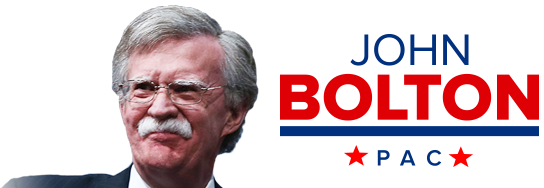Donald Trump proclaimed (https://www.timesofisrael.com/the-closest-weve-ever-come-full-text-of-trump-netanyahu-statements-on-deal-to-end-gaza-war/) that his Middle East peace plan marked “a big, big day, a beautiful day, potentially one of the great days ever in civilization.” Four days later, Hamas said it was prepared to release all remaining hostages to Israel.(https://www.nytimes.com/2025/10/04/world/middleeast/hamas-trump-gaza-deal.html) Trump responded(https://www.washingtonpost.com/world/2025/10/03/hamas-gaza-peace-ceasefire-deal/) that Hamas had shown “they are ready for a lasting peace,” adding “Israel must immediately stop the bombing of Gaza so that we can get the Hostages out safely and quickly!”
Now, reality sets in. First, the “plan” accepted by Arab leaders after meeting Trump in New York during the UN General Assembly was not the same as the plan Trump actually announced. Israeli Prime Minister Bibi Netanyahu persuaded him to make several changes favorable to Israel(https://www.axios.com/2025/09/30/trump-gaza-peace-plan-israel-changes-hamas-response) before their joint White House appearance last week.
While Arab states were reportedly “infuriated” by the changes, they nonetheless publicly supported the plan to allow it to move forward. Nonetheless, weeks, even months, of negotiation will be necessary to advance the plan, even if the hostage exchanges happen quickly. At any point, these negotiations could deadlock, as so many before have. Even after key points have been agreed, they can quickly come apart, a repeated experience in Middle East peace efforts.
Second, the plan is long on aspirations, short on operations and implementation. For example, commentators have focused on what they call an Israeli concession in Point 19 on Palestinian statehood. The text itself, however, is so highly contingent and qualified that it is almost a parody. The plan states that “while Gaza development advances” and the Palestine Authority reform program “is faithfully executed,” then “the conditions may finally be in place for a credible pathway to Palestinian self-determination and statehood.” Caveat emptor, as ancient Romans would say.
Third, and most importantly, Hamas’s announcement Friday was not an unqualified acceptance. It was a “yes, but,” with several potentially debilitating conditions, and implicit attempts to renegotiate the plan as presented. By contrast, it was relatively easy for Israel to accept Trump’s plan without comparable conditions not only because of the changes Trump conceded to Netanyahu, but because, as written, the plan has numerous “off ramps” Israelis can take advantage of when it suits them. Thus, Hamas and Iran, its principal terrorist supporter, are at a political disadvantage from the outset. Trump explicitly gave Neyanyahu his blessing “to do what you would have to do,” and his “full backing to finish the job of destroying the threat of Hamas.”(https://www.nytimes.com/2025/09/29/us/politics/trump-netanyahu-hamas-ultimatum.html) No wonder Jerusalem found it easy to accept the plan.
Finally, Trump has a penchant for declaring victory when the moment suits him, as it did when Hamas gave its initial reaction. He took partial agreement to the potential release of Israeli hostages as a fait accompli, and then proclaimed the entire deal a success. Trump did much the same thing in June after US B-2’s dropped bunker-buster bombs on Iran’s nuclear-weapons program. He declared victory in the “Twelve-Day War” Jerusalem had launched against Tehran, and called for an immediate cease fire. In fact, both America and Israel should have continued the strikes, which had significantly damaged, but certainly not destroyed Iran’s nuclear facilities.
The moments Trump chose to congratulate himself were indeed high points, but they were not final results. This is particularly true in hostage negotiations, which have obsessed Trump since his first term. At the very beginning of his second term, Trump obtained the release of several hostages (and the remains of those deceased) by forcing Israel and Hamas to accept a plan that had essentially been negotiated by the Biden Administration. But after the Biden deal’s hostage exchange had been carried out, the remainder of the deal (aimed at a full resolution of the Israel-Hamas conflict) collapsed. There is every reason to believe the same will happen here.
Hostages raise highly emotive images, but the hard disputes between Israel and Iran and its terrorist surrogates, especially Hamas, are far more difficult to address if the goal is finding a sustainable, long-term solution rather than just social-media excitement.
Obviously, in these early days after the Trump-Netanyahu announcement, neither Israel nor Hamas wants to be publicly shamed as “the obstacle to peace.” We have been through enough similar scenarios to know that much of what we are seeing and hearing is merely performance art. Most importantly, Iran’s silence this past week is deafening. Until Iran signals its support, if ever, the plan will be just words on paper.(https://www.newyorker.com/news/the-lede/is-donald-trumps-sweeping-gaza-peace-plan-really-viable)
Trump’s twenty-point plan is vague, complex, and grandiloquent. It could well simply fall of its own weight. As World War I ended, Woodrow Wilson issued his famous “Fourteen Points” to establish conditions for world peace thereafter. In response, France’s Prime Minister Georges Clemenceau reportedly said, “Fourteen points; why, that’s a little strong! The good Lord had only ten.”(https://www.nytimes.com/1918/11/02/archives/wilsons-commandments-four-more-than-the-lord-laid-down-said.html) We will see whether Trump can do better than Wilson.
This article was originally published by Independent Arabia, on October 6, 2025. Click here to read the original article.


